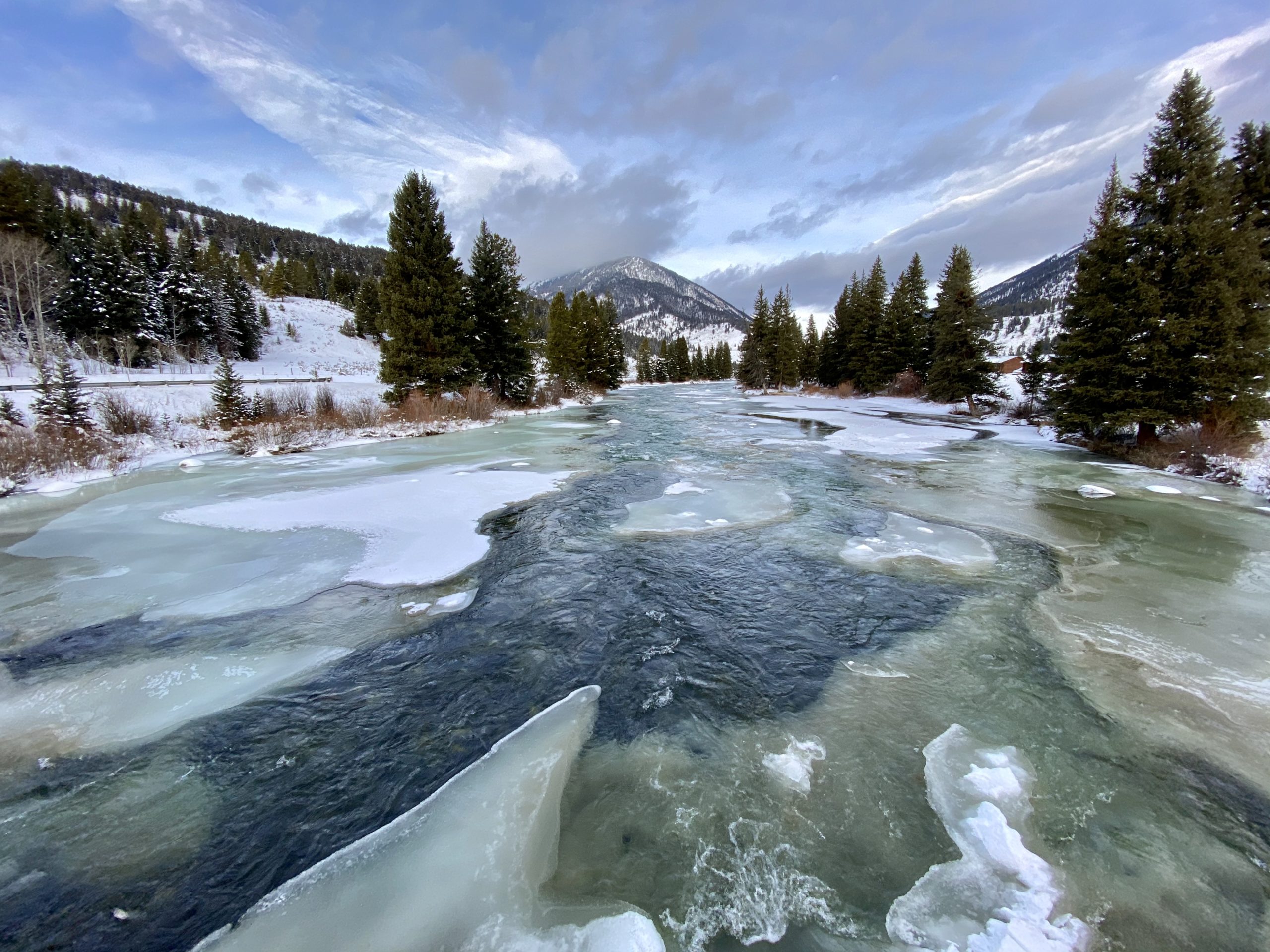What do we actually know about how we are connected to our watershed? How does the connection between precipitation, absorption, runoff, evaporation and consumption play out through our daily use of water, whether for personal or commercial use, recreation, irrigation, or otherwise?
At the most basic level, a watershed encompasses all the land surface that collects and drains water down to a single exit point. Think mountains, to streams, to rivers. The perpetual cycle of water flowing over and through land surfaces eventually sculpts all landscapes into distinct entities known as watersheds, basins, or drainages.
Everyone lives in a watershed somewhere. All of the ways we use water in our daily lives for work or play, home or community, occurs in and affects a watershed. Watersheds can be as large as the Mississippi basin – the 3rd largest in the world, and in which the Gallatin is also included – or they can be as small as all the spaces in a community like Big Sky where contributions to water flows come from our yards, roofs, driveways, or streets to storm drains and out to tributaries that eventually run to the Gallatin.
The Gallatin River watershed has 23 major streams that total nearly 400 miles; 394 to be exact. All of these streams, or tributaries, make up the Gallatin River’s watershed. The West Gallatin starts in Yellowstone and flows northeast along highway 191. The East Gallatin forms in the Gallatin and Bridger mountains then flows through Bozeman and Belgrade. The West and East sections of the Gallatin merge near Manhattan, forming the Gallatin River proper, which joins the Madison and the Jefferson Rivers at Three Forks to form the Missouri River. All pieces of the Gallatin, all connected, flowing from different sources to one source – and all connected to the communities through which they flow.
What we know about watersheds, how we educate ourselves about water supplies, and the tactics we use to protect and preserve them helps inform and shape our science-based solutions for water security and climate resilience. Known as ‘watershed literacy’, this powerful tool allows communities and organizations to make informed decisions when addressing challenges facing watersheds that result from various expressions of climate change: warmer air and water temperatures, lower snowfall, increased flooding, and more frequent and severe drought.
The known health of a watershed provides a benchmark for understanding our past and future land and water use, and the dynamic processes of how water flows in, out, and through our watershed. In addition to the uses of our community water that affect the watershed, considerations of land use, recreation, and the more natural occurrences of evaporation, condensation, rain and snow as precipitation, and ground absorption comprise the full spectrum of the water cycle.
Nothing is or will be more valuable than watersheds with abundant pure water supplies. Ninety-seven percent of the world’s water is held in the oceans and, as salt water, is undrinkable. Another 2% of the world’s water is held frozen in ice caps and glaciers. This leaves only 1% of the world’s water available in lakes, rivers and groundwater for shared use by humans and all other plant, animal, and community sources that depend on freshwater. The importance of how we protect and preserve our community water cannot be overstated, as there is virtually no new water coming to our community sources. All water is recycled. Someone or something else will be using the water after we do, and the water we use has already been used by someone else; solidifying the importance of water conservation and reuse.
Our watershed health depends on the collaborative nature of how we use, reuse, share, access, and maintain our water sources. Part of the nature of preserving community water is through intentional reuse and conservation. Because a watershed only receives water as snowfall, rainfall, and other airborne precipitation like fog or humidity, conservation is critical in slowing the extractive nature of how we use our water: slow the water down, spread it out, give it more opportunity to be absorbed into the ground and stored in the aquifer. In other words, conserve it.
The more we can do to capture, reuse, restore and conserve our water sources, the better for the watershed. Some of these solutions are small and require only minimal changes to our daily uses. Some are bigger and more complex, requiring systemic changes, with broader and more mindful community and global participation. Our job as the community Task Force is to make sure we are using the best sources to help us mindfully address the issues facing the Gallatin River watershed, knowing that our community, and others, depend on it.

